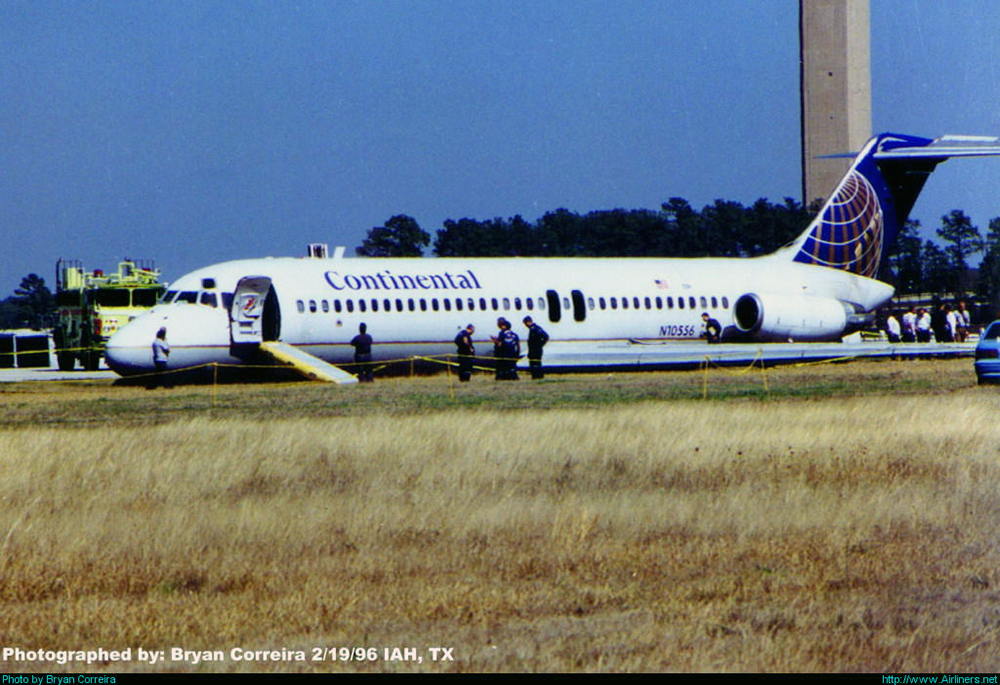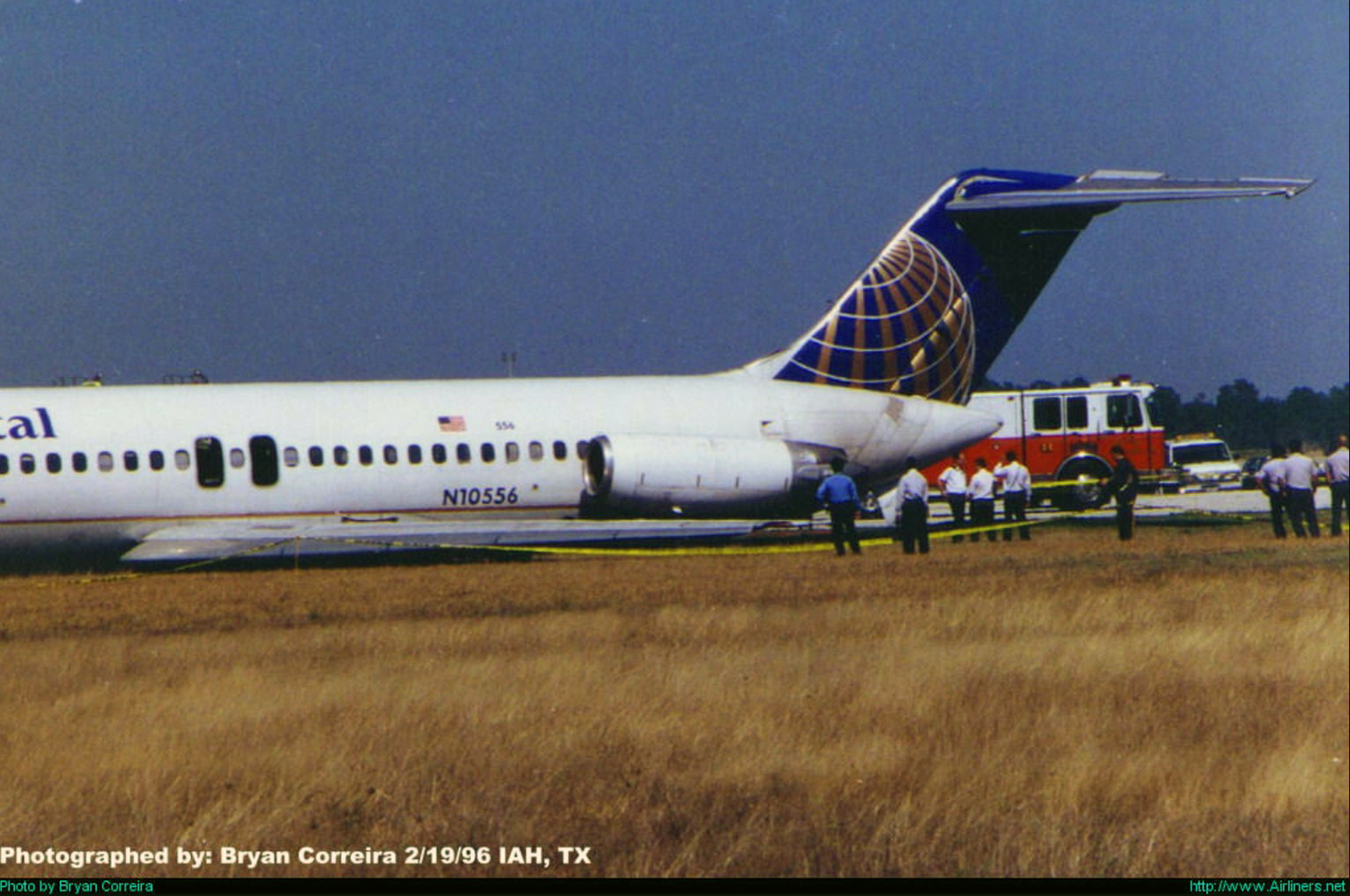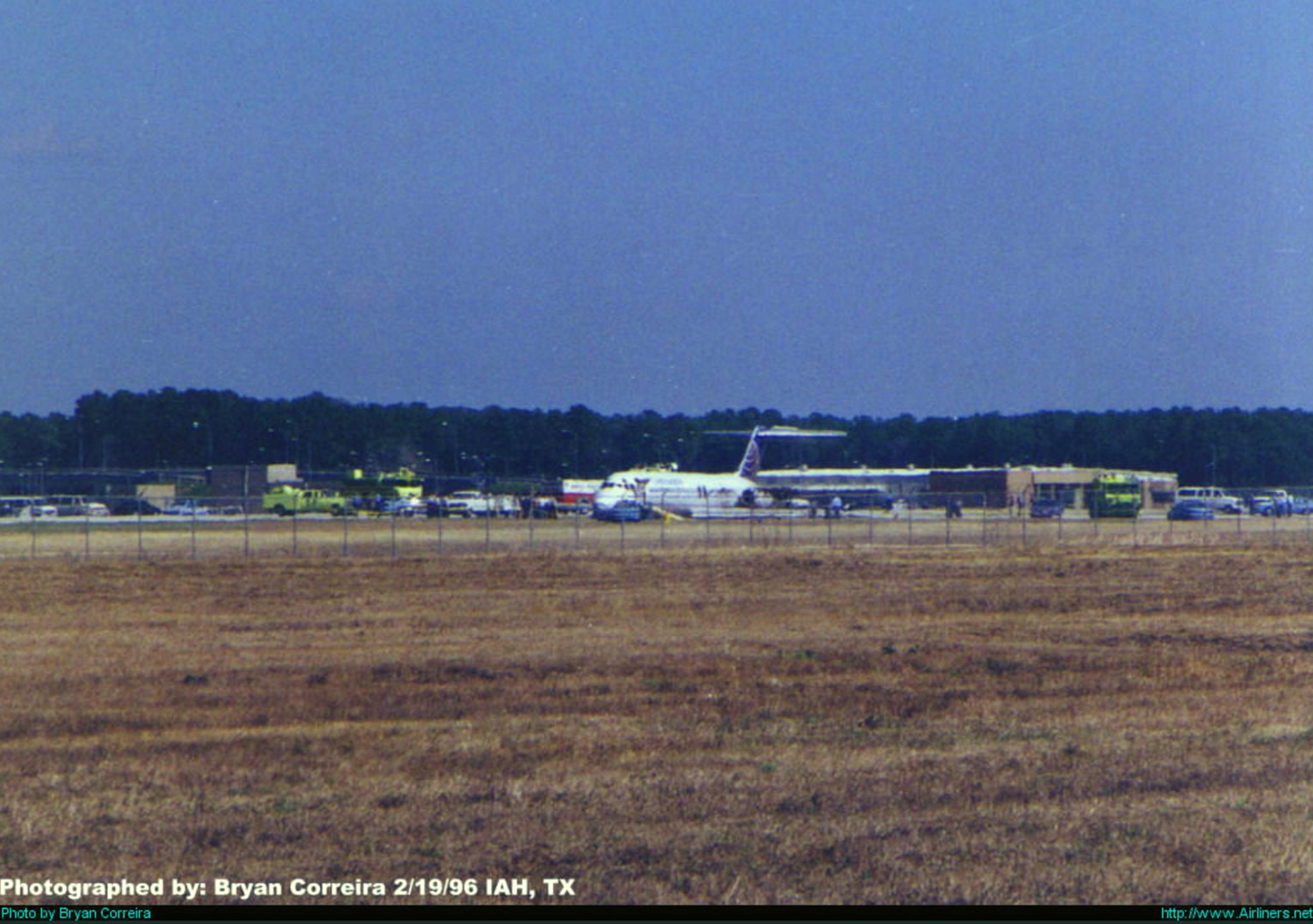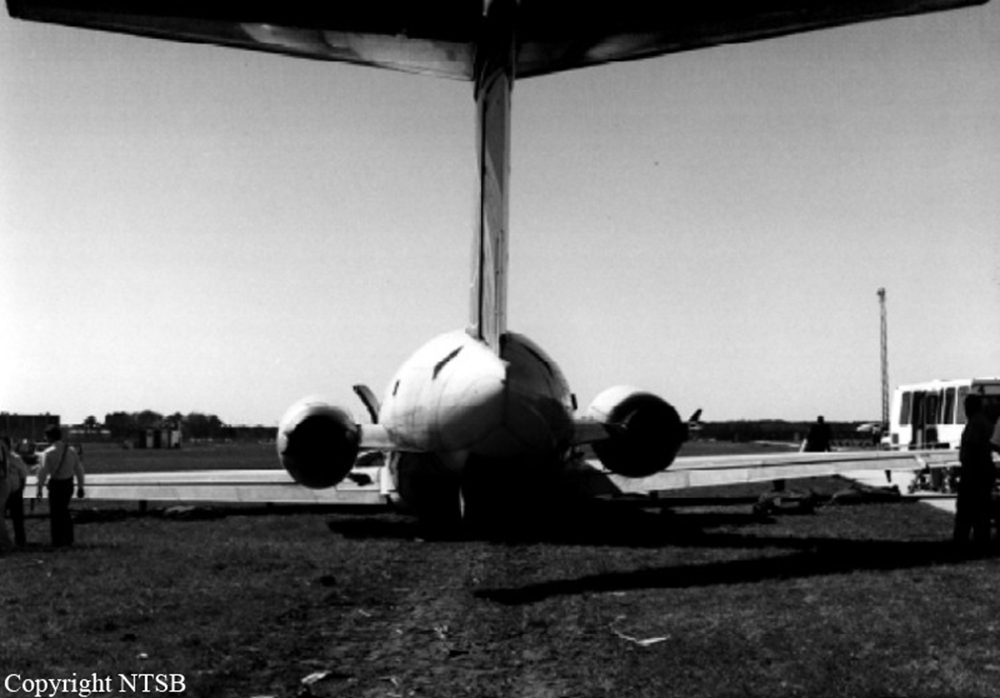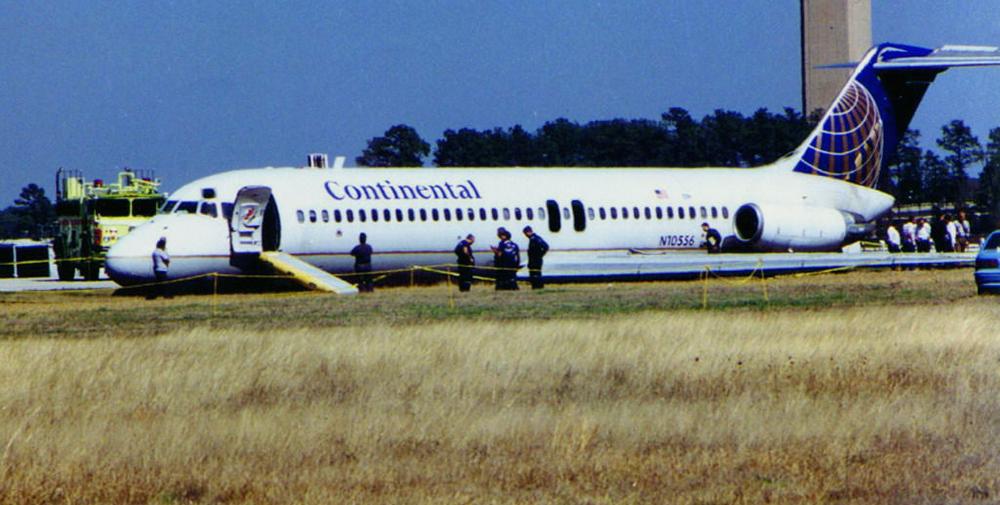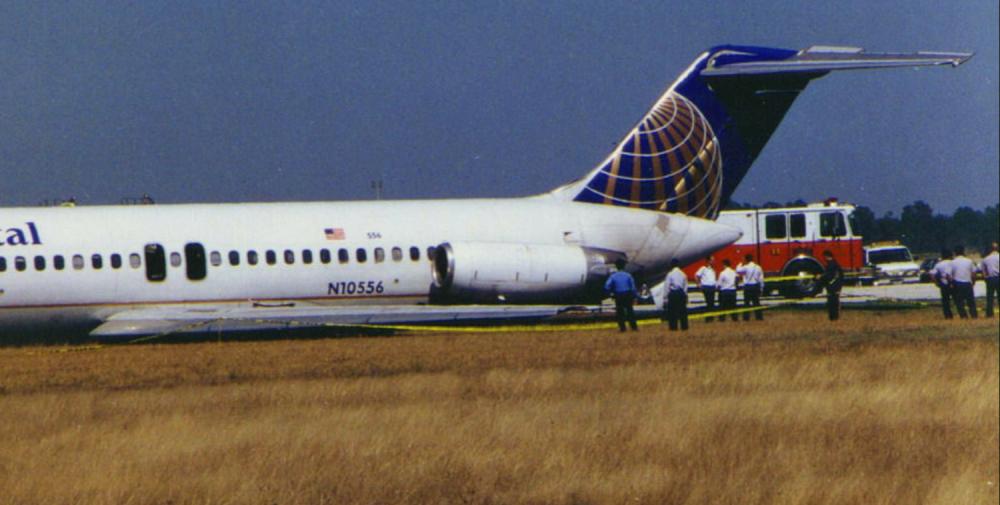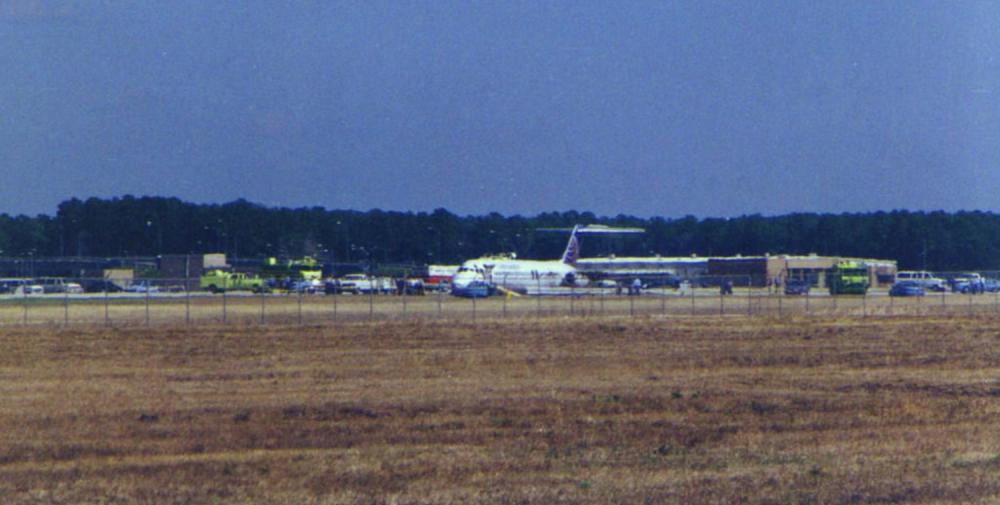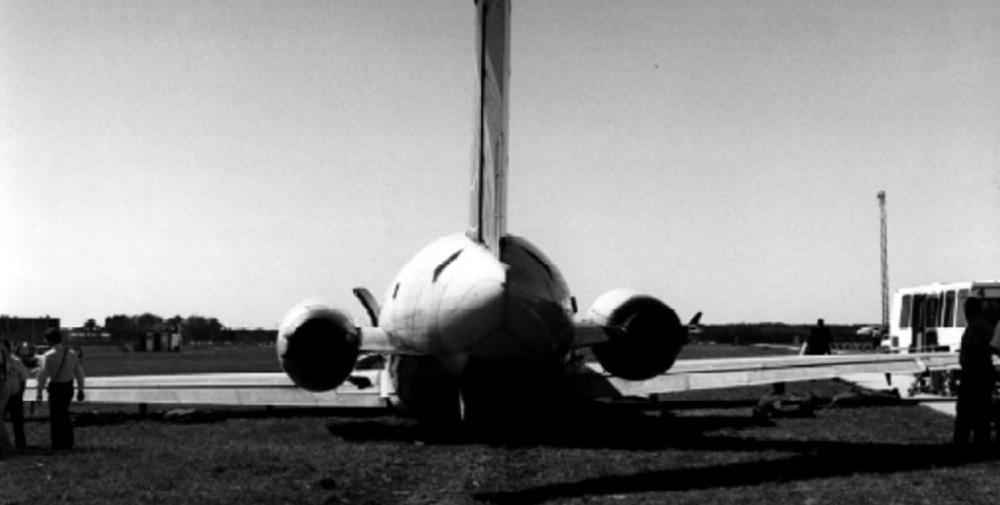Date & Time:
Feb 19, 1996 at 0904 LT
Type of aircraft:
Douglas DC-9
Registration:
N10556
Flight Phase:
Landing (descent or approach)
Flight Type:
Scheduled Revenue Flight
Survivors:
Yes
Schedule:
Washington DC - Houston
MSN:
47423
YOM:
1970
Flight number:
CO1943
Country:
United States of America
Region:
North America
Crew on board:
5
Crew fatalities:
0
Pax on board:
82
Pax fatalities:
0
Other fatalities:
0
Total fatalities:
0
Captain / Total hours on type:
5000
Copilot / Total hours on type:
575
Aircraft flight hours:
63132
Aircraft flight cycles:
58913
Circumstances:
The airplane landed wheels up and slid 6,850 feet before coming to rest in grass about 140 feet left of the runway centerline. The cabin began to fill with smoke, and the airplane was evacuated. Investigation showed that because the captain had omitted the 'Hydraulics' item on the in-range checklist and the first officer failed to detect the the error, hydraulic pressure was not available to lower the landing gear and deploy the flaps. Both the captain and the first officer recognized that the flaps had not extended after the flaps were selected to 15°. The pilots then failed to perform the landing checklist and to detect the numerous cues alerting them to the status of the landing gear because of their focus on coping with the flap extension problem and the high level of workload as a result of the rapid sequence of events in the final minute of flight. The first officer attempted to communicate his concern about the excessive speed of the approach to the captain. There were deficiencies in Continental Airlines' (COA) oversight of its pilots and the principal operations inspector's oversight of COA. COA was aware of inconsistencies in flightcrew adherence to standard operating procedures within the airline; however, corrective actions taken before the accident had not resolved this problem.
Probable cause:
The captain's decision to continue the approach contrary to Continental Airlines (COA) standard operating procedures that mandate a go-around when an approach is unstabilized below 500 feet or a ground proximity warning system alert continues below 200 feet above field elevation. The following factors contributed to the accident:
(1) the flightcrew's failure to properly complete the in-range checklist, which resulted in a lack of hydraulic pressure to lower the landing gear and deploy the flaps;
(2) the flightcrew's failure to perform the landing checklist and confirm that the landing gear was extended;
(3) the inadequate remedial actions by COA to ensure adherence to standard operating procedures; and
(4) the Federal Aviation Administration's inadequate oversight of COA to ensure adherence to standard operating procedures.
(1) the flightcrew's failure to properly complete the in-range checklist, which resulted in a lack of hydraulic pressure to lower the landing gear and deploy the flaps;
(2) the flightcrew's failure to perform the landing checklist and confirm that the landing gear was extended;
(3) the inadequate remedial actions by COA to ensure adherence to standard operating procedures; and
(4) the Federal Aviation Administration's inadequate oversight of COA to ensure adherence to standard operating procedures.
Final Report:
N10556.pdf617.06 KB
